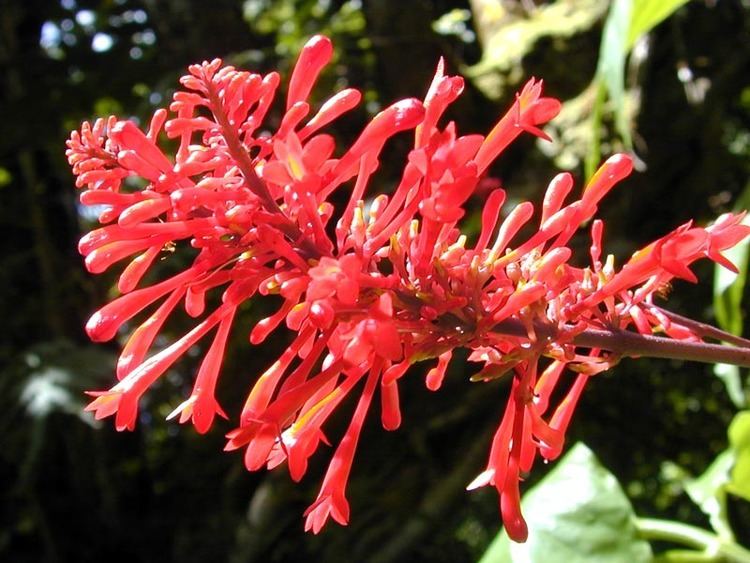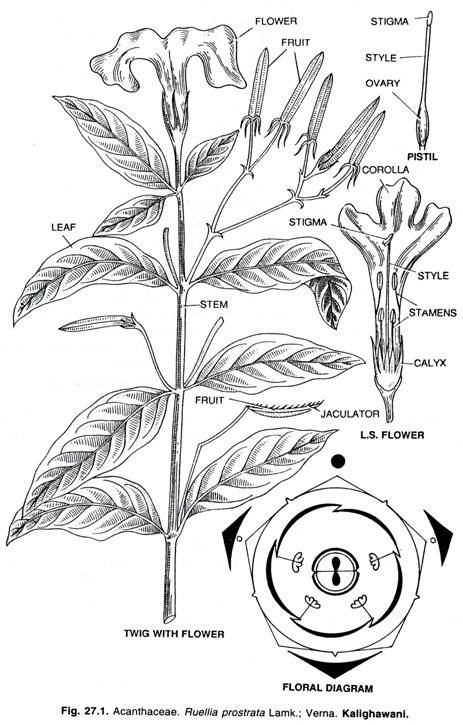Scientific name Acanthaceae | ||
 | ||
Lower classifications | ||
Ayurvedic use acanthaceae piyabasa
Acanthaceae is a family (the acanthus family) of dicotyledonous flowering plants containing almost 250 genera and about 2500 species. Most are tropical herbs, shrubs, or twining vines; some are epiphytes. Only a few species are distributed in temperate regions. The four main centres of distribution are Indonesia and Malaysia, Africa, Brazil, and Central America. The representatives of the family can be found in nearly every habitat, including dense or open forests, scrublands, wet fields and valleys, sea coast and marine areas, swamps, and mangrove forests.
Contents
- Ayurvedic use acanthaceae piyabasa
- Justicia brandegeeana acanthaceae shrimp plant flor camar o
- Description
- Medicinal uses
- Phytochemistry
- Selected genera
- Excluded genera
- References

Justicia brandegeeana acanthaceae shrimp plant flor camar o
Description

Plants in this family have simple, opposite, decussated leaves with entire (or sometimes toothed, lobed, or spiny) margins, and without stipules. The leaves may contain cystoliths, calcium carbonate concretions, seen as streaks on the surface.

The flowers are perfect, zygomorphic to nearly actinomorphic, and arranged in an inflorescence that is either a spike, raceme, or cyme. Typically, a colorful bract subtends each flower; in some species, the bract is large and showy. The calyx usually has four or five lobes; the corolla tubular, two-lipped or five-lobed; stamens number either two or four, arranged in pairs and inserted on the corolla, and the ovary is superior and bicarpellated, with axile placentation.

The fruit is a two-celled capsule, dehiscing somewhat explosively. In most species, the seeds are attached to a small, hooked stalk (a modified funiculus called a jaculator or a retinaculum) that ejects them from the capsule.
A species well-known to temperate gardeners is bear's breeches (Acanthus mollis ), a herbaceous perennial plant with big leaves and flower spikes up to 2 m tall. Tropical genera familiar to gardeners include Thunbergia and Justicia.
Avicennia, a genus of mangrove trees, usually placed in Verbenaceae or in its own family, Avicenniaceae, is included in Acanthaceae by the Angiosperm Phylogeny Group on the basis of molecular phylogenetic studies that show it to be associated with this family.
Medicinal uses
Traditionally the most important part use in Acanthaceae is the leaves and they are used externally for wounds. Some research has indicated that Acanthaceae possess antifungal, cytotoxic, anti-inflammatory, anti-pyretic, antioxidant, insecticidal, hepatoprotective, immunomodulatory, anti- platelet aggregation and anti-viral potential.
Phytochemistry
Phytochemical reports on family Acanthaceae are glycosides, flavonoids, benzonoids, phenolic compounds, naphthoquinone and triterpenoids.
Selected genera
The 246 accepted genera, according to Germplasm Resources Information Network,are:
